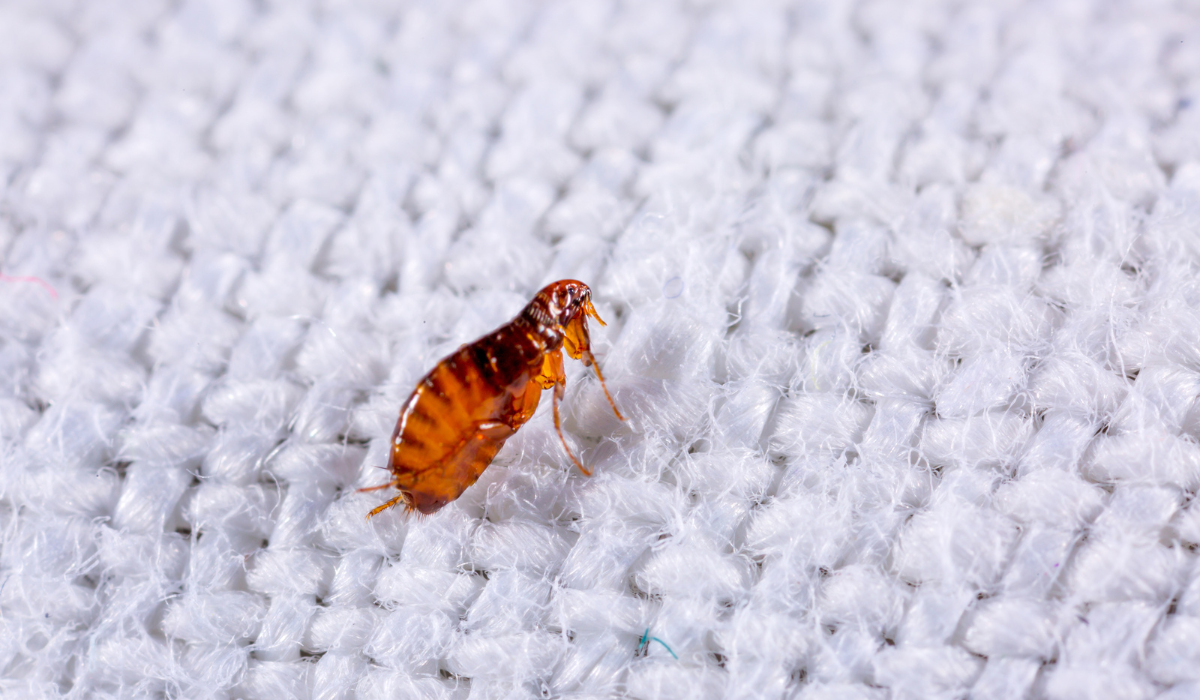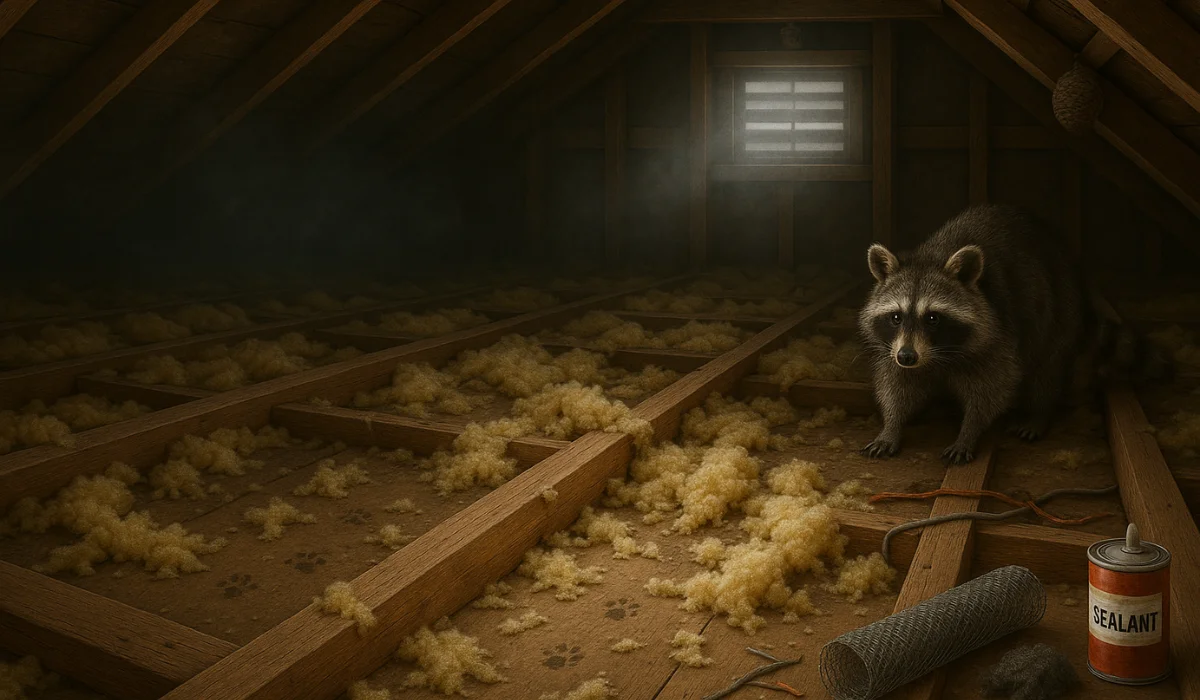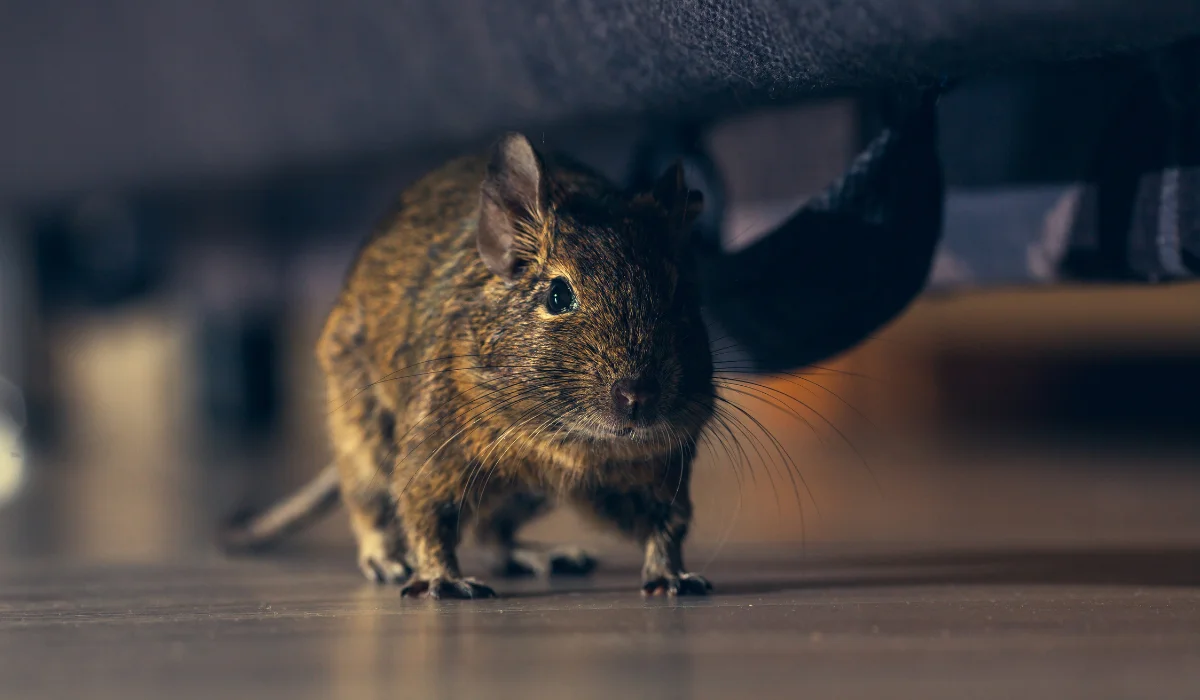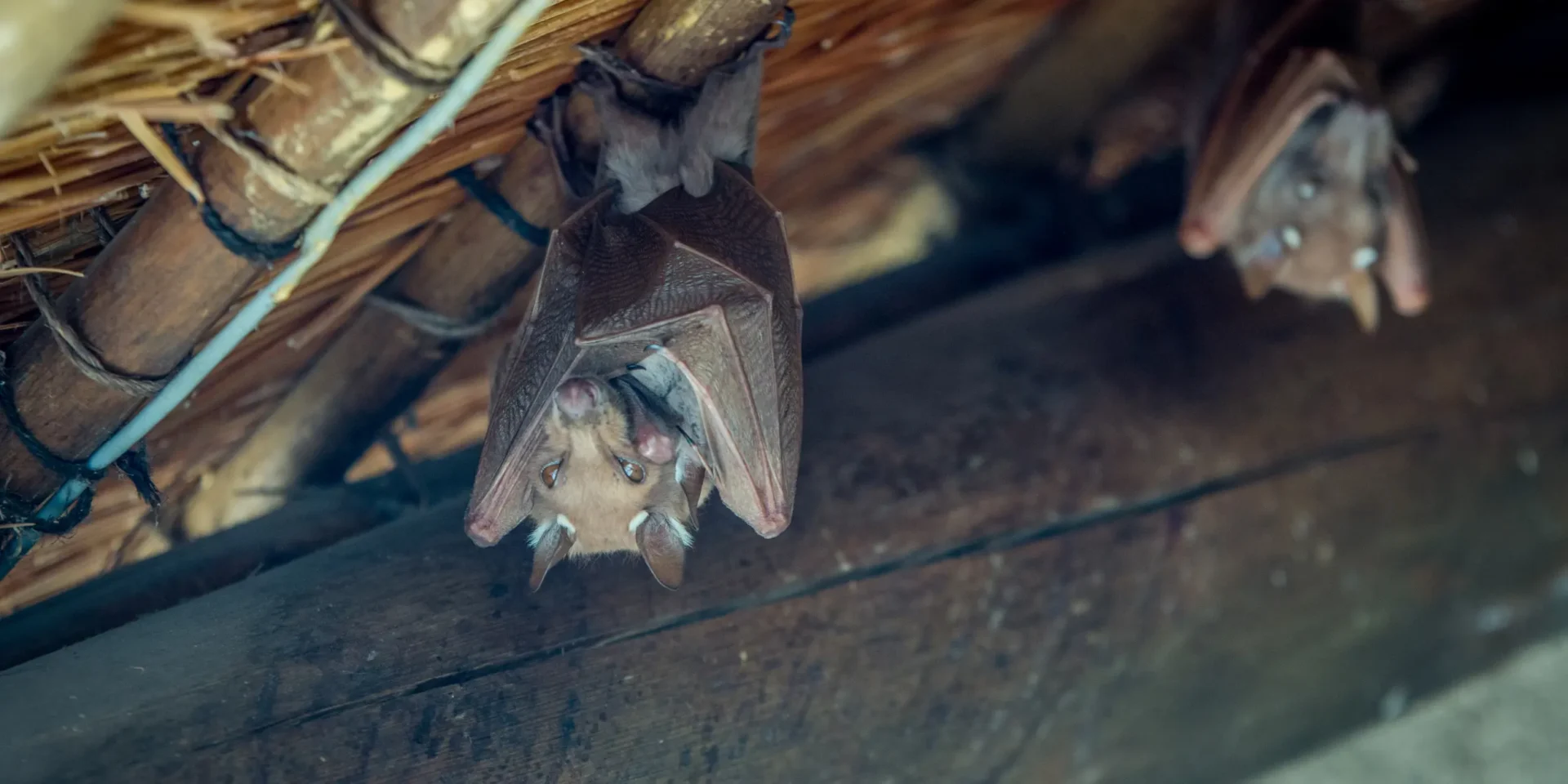Fleas are a common problem for pet owners. They thrive by feeding on the blood of rodents, raccoons, and birds. These pests can cause serious health issues for pets and humans.
Knowing how fleas survive helps in fighting infestations. Pre-adult fleas can live for months without a host, but adults need animal or human blood to reproduce and can only survive a few days to two weeks without one.
Learn more about how temperature and humidity affect flea survival and discover ways to prevent flea problems.
Key Takeaways
- Fleas can survive indoors without a host for several days, with their resilience allowing them to enter a quasi-hibernation state.
- Environmental factors like temperature, humidity, and availability of organic debris significantly affect flea survival indoors.
- Flea infestations can be identified by checking pet bedding, carpets, furniture, and baseboards for signs like flea dirt, eggs, or adult fleas.
- Preventing flea infestations involves regular home cleaning, such as vacuuming carpets, washing bedding in hot water, and using appropriate pet care treatments.
- Professional pest control services provide comprehensive solutions for severe flea infestations, ensuring thorough treatment and follow-up.
CAN FLEAS SURVIVE INDOORS WITHOUT A HOST?
Fleas have a notorious reputation for being persistent pests once they’ve made themselves at home indoors. Without a host, adult fleas can live several days on average.
While their lifespan significantly decreases, they can endure for a surprising amount of time.
This resilience stems from their ability to enter a quasi-hibernation state, during which their metabolism slows significantly.
Factors Affecting Flea Survival Without A Host
While a flea’s life span indoors significantly decreases without a host, these critters are surprisingly hardy.
Their survival depends on various factors, including environmental conditions and the life stage.
Flea Life Cycle
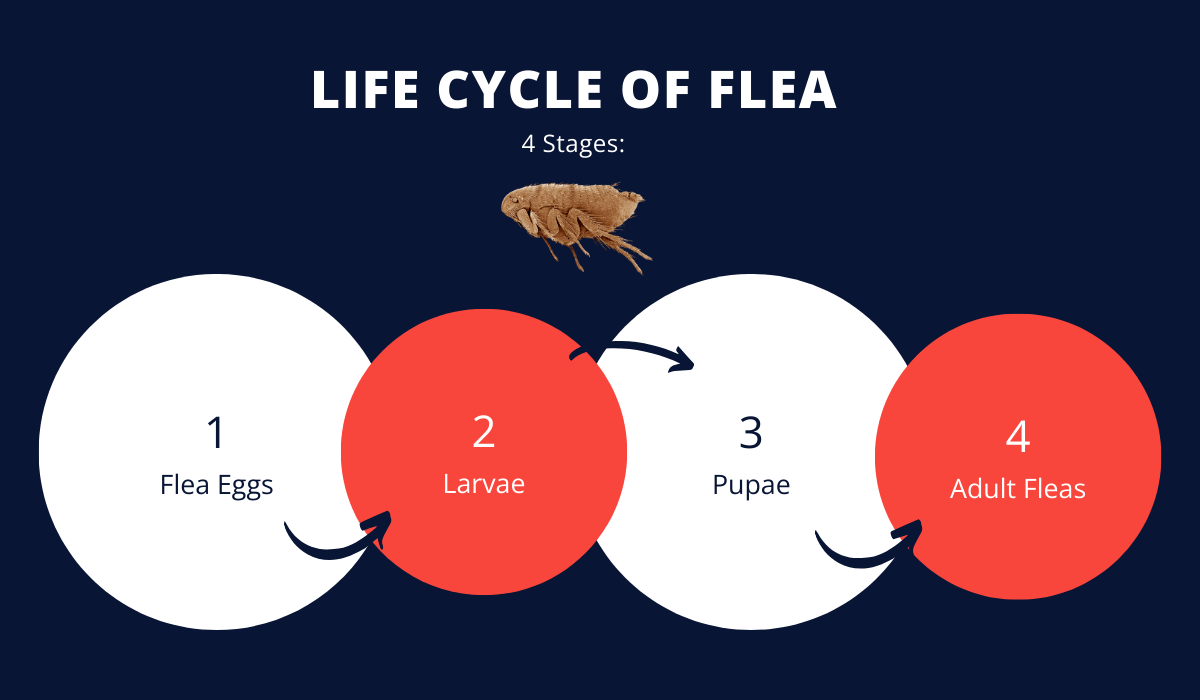
Fleas undergo a complex life cycle comprising the egg, larval, pupal, and adult stages. Each plays a distinct role in flea survivability when detached from a host.
Here’s how long each stage can survive without a host:
| Stages | Duration without host (approx.) |
| Flea Eggs | 2-14 days |
| Flea Larvae | 5-20 days |
| Flea Pupae | Up to 5 months |
| Adult Fleas | 2 days to 2 weeks |
The environment also plays a crucial role in determining flea longevity sans a host. Here are some key environmental factors that can also potentially allow them to breed year-round:
- Temperature: Fleas thrive in warm climates but can perish in extreme cold or heat.
- Humidity: Adequate humidity is necessary for flea eggs to hatch and for larvae to survive.
- Availability of organic debris: Once the eggs hatch, the larvae feed on organic material like flea dirt.
- Shelter: Places that protect the pupae stage, enclosed within a cocoon, from harsh conditions help prolong their life stages.
- Presence of other hosts: Flea survival increases if other potential hosts are accessible.
Various flea species exhibit distinct survival tactics that aid their existence without an animal host. Here’s how their adaptations affect their length of survival without a host:
| Flea Species | Survival without host | Notable Adaptations |
| Cat Fleas (Ctenocephalides felis) | 1-2 weeks | Strong jumper, high reproduction rates |
| Dog Fleas (Ctenocephalides canis) | 1-2 weeks | Prefers canine hosts, readily jumps to new hosts |
| Human Fleas(Pulex irritans) | Several months | Can remain dormant in the pupal stage longer |
SIGNS OF A FLEA INFESTATION
Spotting the physical signs of fleas is crucial as it’s often the first step in addressing an infestation. You should be on the lookout for indicators in these prone areas:
- Pet Bedding: Check for flea dirt (or flea feces) and eggs, especially in the seams and underneath the bedding.
- Carpets and Rugs: Look closely for small dark specks or adult fleas jumping within the fibers.
- Furniture: Examine crevices and under cushions for evidence of fleas or their waste.
- Baseboards: Inspect the edges where walls meet floors for clusters of flea eggs or dead skin sheddings.
Pets infected with fleas often exhibit distinct behavioral changes, essential signs of potential flea activity.
As pet owners, here’s a close look at critical behaviors to watch:
| Behaviors | Description |
| Excessive Scratching, Licking, or Biting | Pets may scratch incessantly to relieve the irritation caused by adult female flea bites. |
| Restlessness | An infested pet may seem unusually restless due to the discomfort of flea bites. |
| Changes in Sleep Patterns | The irritation might interrupt a pet’s regular sleep habits. |
| Avoidance of Certain Areas | Pets might avoid areas where flea populations are high, such as their bedding. |
| Visible Discomfort or Agitation | Pets may seem agitated or in pain, particularly if they have sensitive skin or allergic reactions. |
HOW TO PREVENT FLEA INFESTATIONS
Home Maintenance Tips
Keeping a home clean is paramount to preventing flea infestation. Therefore, frequent sanitation and the use of the right tools are critical.
Here’s a quick guide:
- Vacuuming: Use a vacuum cleaner weekly on carpets, rugs, and upholstery. Fleas can lay eggs in these fabrics, which, without proper suction, become ideal breeding grounds.
- Hot Water Washing: To eliminate flea eggs and larvae, bedding, and removable fabric covers should be washed in hot water fortnightly.
- Floor Cleaning: Mop hard surfaces with hot water and appropriate cleaning agents weekly to deter fleas from lingering.
Pet Care and Maintenance
Pets are the primary targets for fleas, so keeping them clean and using preventive treatments is crucial to avoid secondary problems like tapeworms.
Here are some flea prevention techniques for your pets:
| Prevention Methods | Application |
| Regular Bathing with Flea Shampoo | Lather and rinse as per product instructions |
| Flea Collars | Secure around pet’s neck, check fit |
| Topical Treatments | Apply to pet’s skin between shoulder blades |
| Oral Flea Prevention Medications | Administer as per vet’s guidelines |
| Flea Combs | Comb through the pet’s coat to remove fleas |
DIY FLEA CONTROL SOLUTIONS
DIY flea control methods are favored for their budget-friendly approach. However, they aren’t always effective. This can make DIY methods expensive in the long run!
Here are some DIY pest control methods and how to use them:
- Diatomaceous Earth: Sprinkle food-grade diatomaceous earth on carpets and pet bedding to dehydrate and kill fleas.
- Flea Traps: Create light traps by placing soapy water under a night light to attract and drown fleas.
- Essential Oils: Apply oils such as peppermint or eucalyptus mixed with water to areas where fleas are present, but be cautious as some can be toxic to pets.
TIME TO CALL THE FLEA EXPERTS?
When multiple rooms or areas in the home are affected, or they bite humans for a blood meal, even after do-it-yourself treatments have been applied, it might be time to call in pest control professionals.
Whether you’re in Baton Rouge or New Orleans, seeking expert help should be easy. For immediate intervention for a severe infestation, let Lajaunie’s flea control specialists tailor a solution that’s right for your home.
For more information about the areas we service, visit our location page.
 By: LaJaunie's Pest Control
By: LaJaunie's Pest Control 